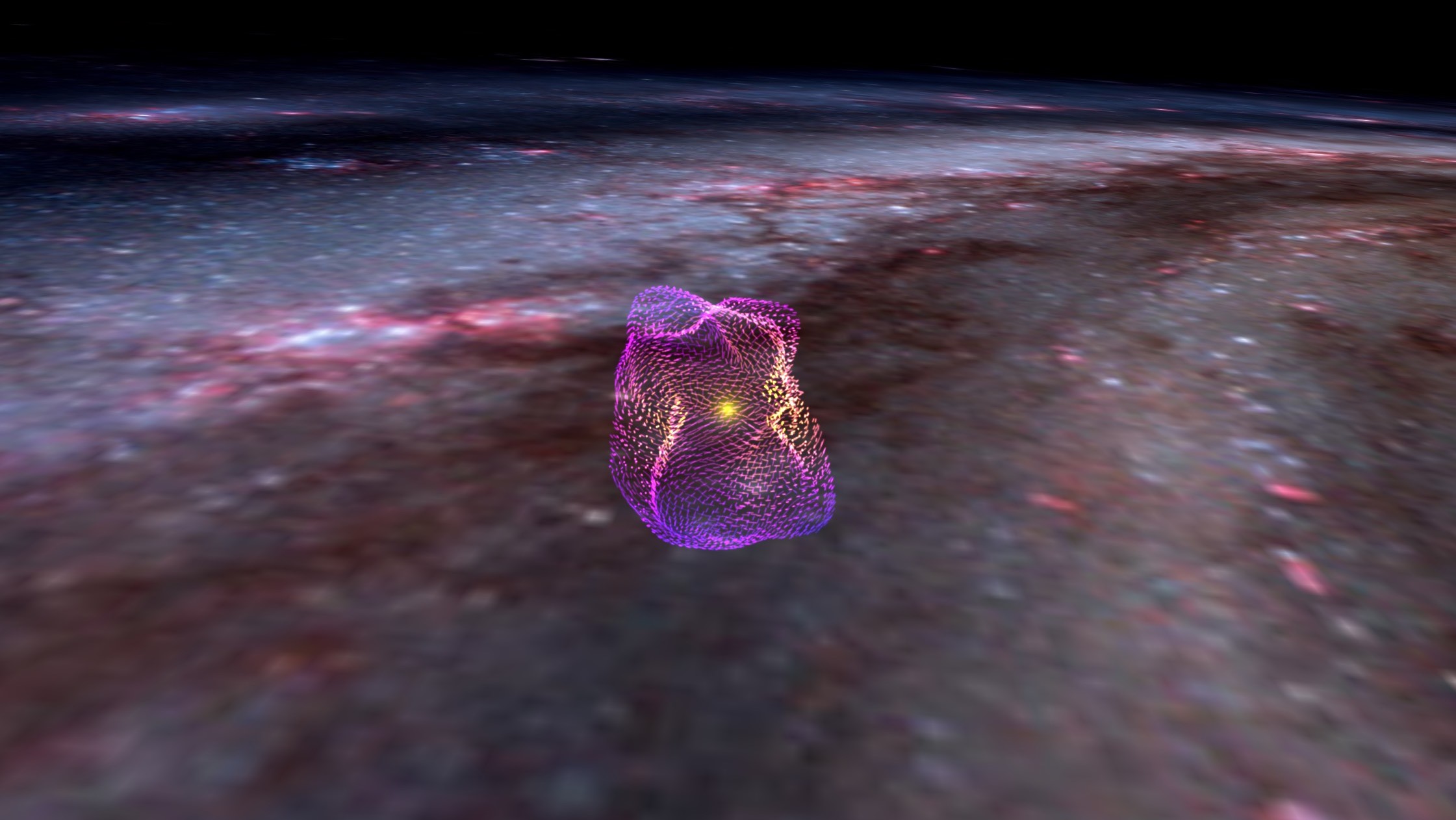Astronomers make 1st-ever 3D map of Local Bubble's magnetic fields
The supernova-blown bubble in interstellar space is like a snow plow sweeping up gas and dust at its boundaries.
Interstellar cartographers have for the first time mapped in 3D the magnetic field swept up by the Local Bubble.
The Local Bubble is a cavity at least 1,000 light-years wide in the interstellar gas around the solar system — a 'superbubble' in interstellar space. The Local Bubble was blown out by a series of supernovas between 10 million and 20 million years ago, and is one of many such bubbles in the interstellar medium that riddle our Milky Way galaxy and others like the cavities in Swiss cheese.
"Putting together this 3D map of the Local Bubble will help us examine superbubbles in new ways," Theo O'Neill, who used data from the European Space Agency's (ESA) Gaia and Planck missions to assemble the map, said in a statement. O'Neill was an undergraduate student at the University of Virginia when he made the map during a summer research camp at the Harvard–Smithsonian Center for Astrophysics, under the tutelage of Harvard astrophysicist Alyssa Goodman.
Related: Hear the sounds of starquakes across the Milky Way from Gaia probe
"We've long known that magnetic fields must play important roles in many astrophysical phenomena," Goodman said in the statement.
"But studying these magnetic fields has been notoriously difficult," she said. "Today's computer simulations and all-sky surveys may just finally be good enough to start really incorporating magnetic fields into our broader picture of how the universe works, from the motions of tiny dust grains on up to the dynamics of galaxy clusters."
The key to mapping the magnetic-field structure of the Local Bubble is interstellar dust, particularly charged particles that can follow magnetic field lines across space. In particular, ESA's Planck mission, which studied the cosmic microwave background radiation between 2009 and 2013, was also sensitive to polarized microwave emission from this charged dust. The polarization tells of the orientation in which the dust is emitting microwaves; this orientation is affected by the magnetic-field lines. Meanwhile, observations by ESA's Gaia spacecraft, which launched in 2013, charted the location of interstellar dust on the surface of the Local Bubble, which is expanding and sweeping up both dust and magnetic field lines that are strewn throughout space.
Breaking space news, the latest updates on rocket launches, skywatching events and more!
To start, O'Neill assembled a 2D map of magnetic fields on the sky, before performing a geometrical analysis to turn it into a 3D representation. Previous research by Goodman had found that most of the young stars and regions of star formation in the vicinity of the sun are to be found on the edge of the expanding Local Bubble, where dust and gas is compressed. O'Neill's map shows that indeed the magnetic-field lines do coincide with large sites of star formation on the surface of the Local Bubble, such as the Orion Molecular Cloud that is home to the famous Orion Nebula, located 1,344 light-years away from Earth.
There are some caveats, however, leading to the map being somewhat rough around the edges. "We've made some big assumptions to create this first 3D map of a magnetic field; it's by no means a perfect picture," Goodman said.
The two main assumptions are first that the dust producing the polarized emission is on the surface of the Local Bubble and not farther away, and second that magnetic-field lines are being swept up onto the edge of the Local Bubble as it expands. However, as both computer modeling and scientists' understanding of superbubbles improves, so too will the accuracy of the map.
As in the Local Bubble, astronomers believe that superbubbles in general play a significant role in the process of star formation.
"Space is full of these superbubbles that trigger the formation of new stars and planets and influence the overall shapes of galaxies," O'Neill said. "By learning more about the exact mechanics that drive the Local Bubble, in which the sun lives today, we can learn more about the evolution and dynamics of superbubbles in general."
O'Neill presented the research at the 241st meeting of the American Astronomical Society, being held this week in Seattle and virtually.
Follow Keith Cooper on Twitter @21stCenturySETI. Follow us on Twitter @Spacedotcom and on Facebook.

Keith Cooper is a freelance science journalist and editor in the United Kingdom, and has a degree in physics and astrophysics from the University of Manchester. He's the author of "The Contact Paradox: Challenging Our Assumptions in the Search for Extraterrestrial Intelligence" (Bloomsbury Sigma, 2020) and has written articles on astronomy, space, physics and astrobiology for a multitude of magazines and websites.

